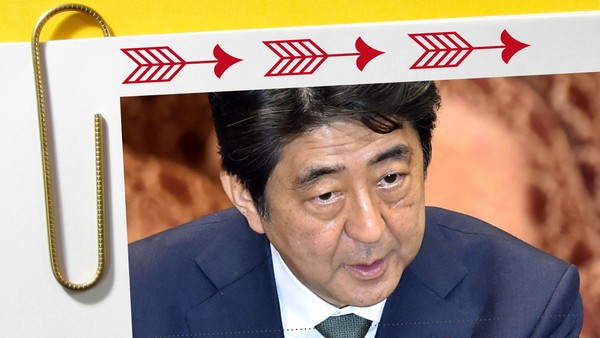
It is sometimes called the “missing arrow” of Abenomics: on top of monetary and fiscal stimulus, Prime Minister Shinzo Abe came to power promising massive structural reforms, sufficient to raise Japan’s growth rate to an average of 2 per cent over the next 10 years.
Ten quarters after taking office, the economy is only 2.2 per cent bigger in real, seasonally adjusted terms, and the International Monetary Fund’s take is typical.
This summer, the fund called for Abenomics to be “reloaded”, saying that “further high-impact structural reforms are urgently needed to lift growth”.
However, many analysts in Tokyo give Mr Abe considerable credit, saying he has tackled some of Japan’s most entrenched interest groups.
Here is a scorecard of Mr Abe’s main “third arrow” reforms.
AGRICULTURE
Agricultural co-operative reform is one of Mr Abe’s biggest successes to date, breaking the power of a formidable vested interest. “The political will required . . . was quite epoch-making,” says Robert Feldman, chief Japan economist at Morgan Stanley, given past political pandering to rural voters. The challenge now is to turn reform into agricultural productivity and pass the Trans-Pacific Partnership trade deal.
ENERGY
Mr Abe is on track to meet his goal of a full liberalisation of Japan’s electricity market by 2016 and there are already hints it will lower some of the world’s highest consumer energy bills. After much agonising, Kyushu Electric brought its Sendai nuclear reactor back on line this August. The rest of Japan’s nuclear fleet remains idle, however, while analysts criticised this year’s new energy mix strategy as an unambitious compromise.
TAX REFORM
Mr Abe cut Japan’s corporate tax rate from 34.62 per cent to 32.11 per cent this year and it will fall again to 31.33 per cent next year. His goal is to get the rate down into the 20s but for now Japan still has one of the highest corporate tax rates in the OECD, and there is little sign of the aggressive assault on depreciation and other allowances called for by analysts such as Andrew Smithers.
WOMENOMICS
Japanese female employment has reached a record high of 65 per cent and Mr Abe has been vocal on the issue, with a new gender equality law forcing companies with at least 300 employees to fix and publish targets for promoting women as managers. Kathy Matsui of Goldman Sachs described the legislation as “a giant step forWomenomics”. There is no compulsion, however, and getting women into part-time jobs is a lesser challenge than breaking down an oppressive glass ceiling.
CORPORATE GOVERNANCE
For many, Japan’s corporate governance and stewardship codes are the clearest third arrow success. Pushed through with unexpected speed and determination, they have changed the atmosphere for Japan Inc. Companies are straining to raise their return on equity and boardrooms are more receptive to external directors. But, says CLSA’s Japan strategist Nicholas Smith, “the key is turning up the pressure on CEOs of return-on-equity dwarfs that undershot the 5 per cent hurdle but have the assets for buybacks”.
SPECIAL ECONOMIC ZONES
“The general direction on special economic zones is positive,” says Daiju Aoki, an economist at UBS, “but real developments with actual impact on the economy will take longer to emerge.” There are hints of success, such as larger buildings making their way through the Tokyo planning system. A bigger change, and an example of Mr Abe’s willingness to take on cultural taboos, will be the small local zones where families can sponsor visas for foreign maids for child and elderly care. Some 68 local authorities have had such plans approved by the PM’s office.
IMMIGRATION
Japan’s falling population means higher immigration is one of few plausible routes to faster growth. Take-up of existing schemes for skilled foreign workers remains very low, however, with the only progress in tiny niches such as IT workers and ski instructors. Haruko Arimura, Mr Abe’s administrative reform minister, recently described immigration as a “Pandora’s Box” and warned that “the world has been shaken by immigrants who come into contact with extremist thinking”.
LABOUR REFORM
One crucial area where Mr Abe has shown little ambition, let alone results, is tackling the labour market gulf between permanent and temporary employees. The International Monetary Fund argues that this is crucial to raising productivity, but Mr Abe just abandoned one of the few planned labour reforms: a “white collar exemption” to working hours rules. “On labour law they’re really just not moving fast enough,” says Mr Feldman.





























Hiç yorum yok:
Yorum Gönder